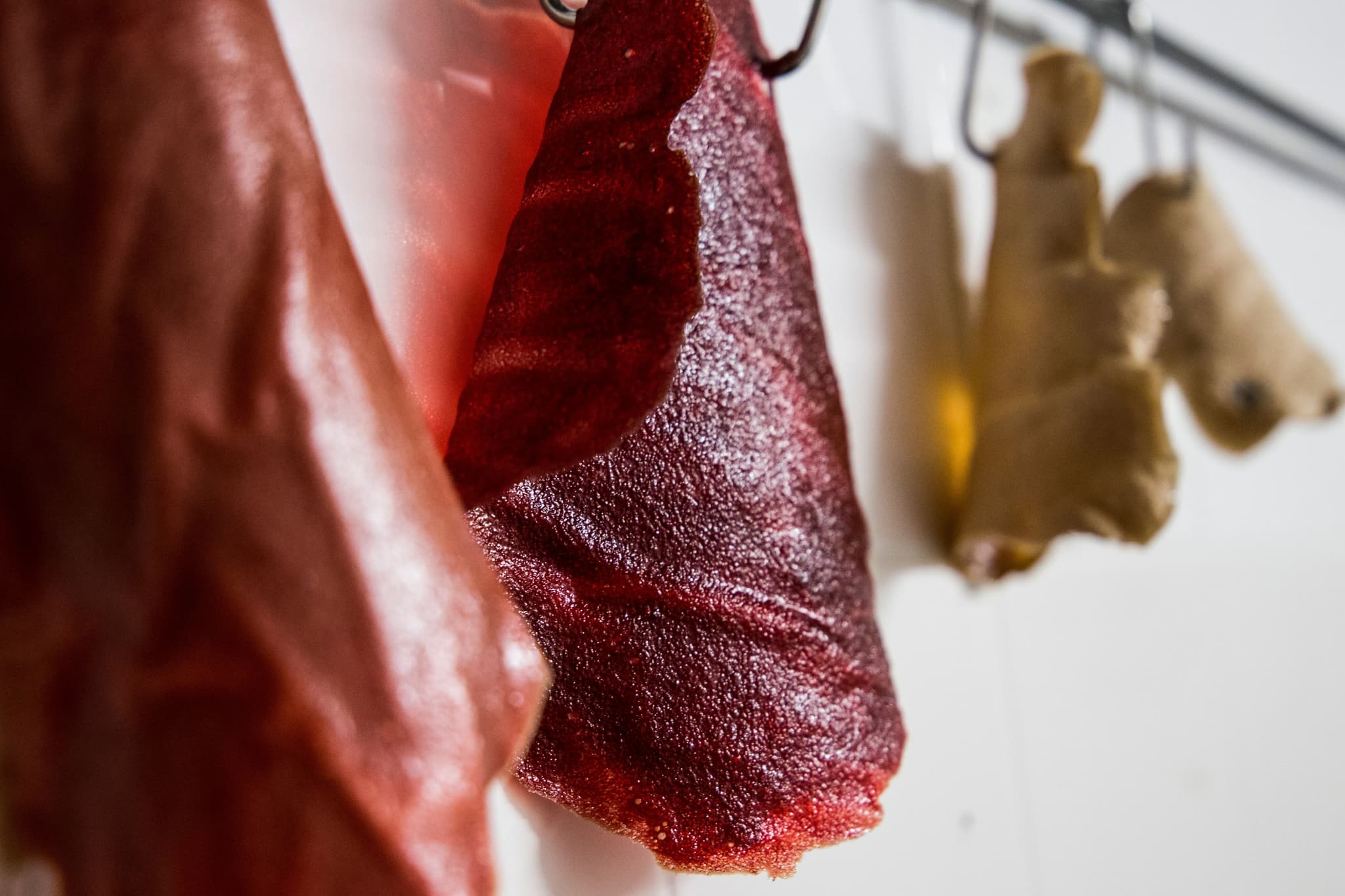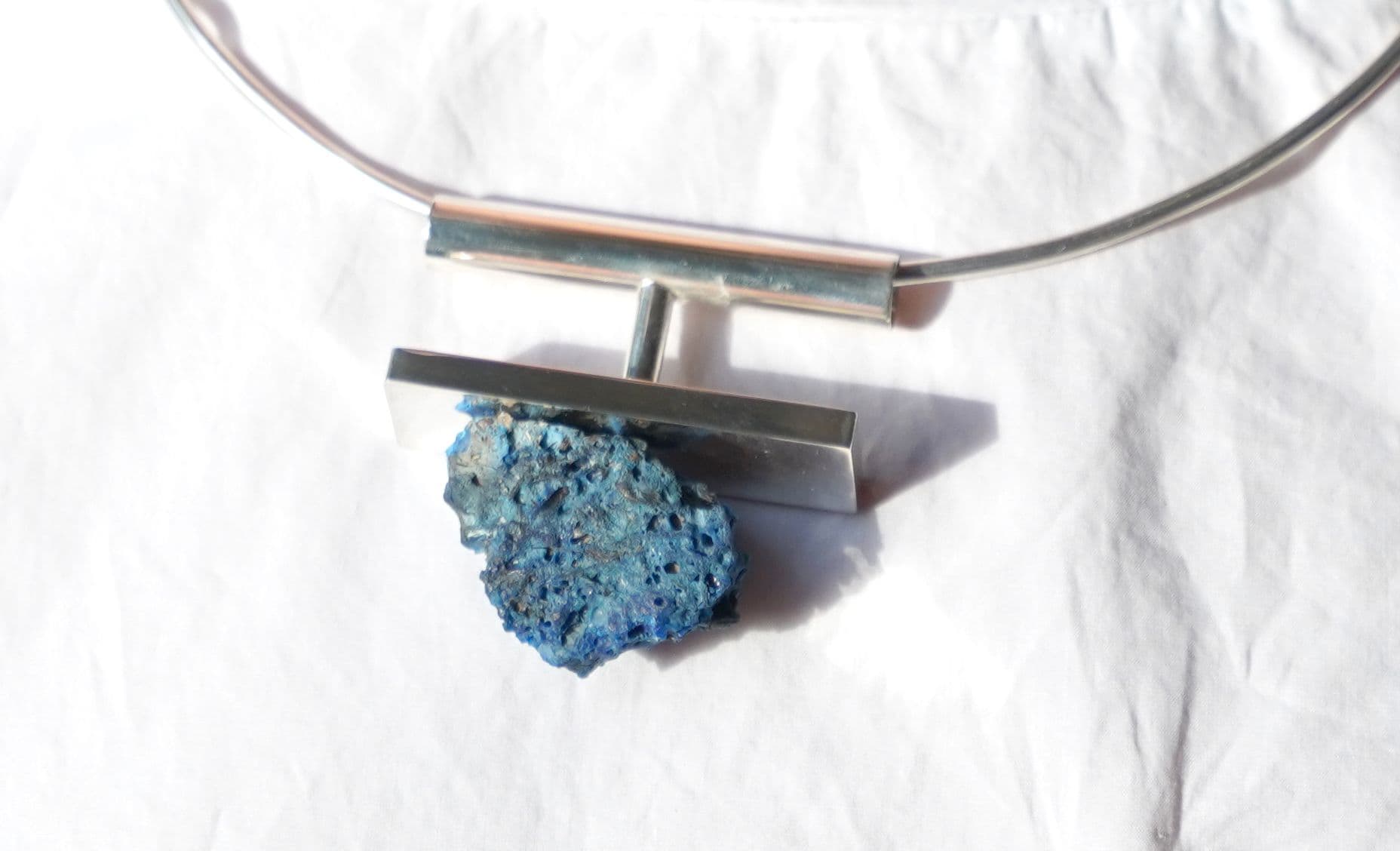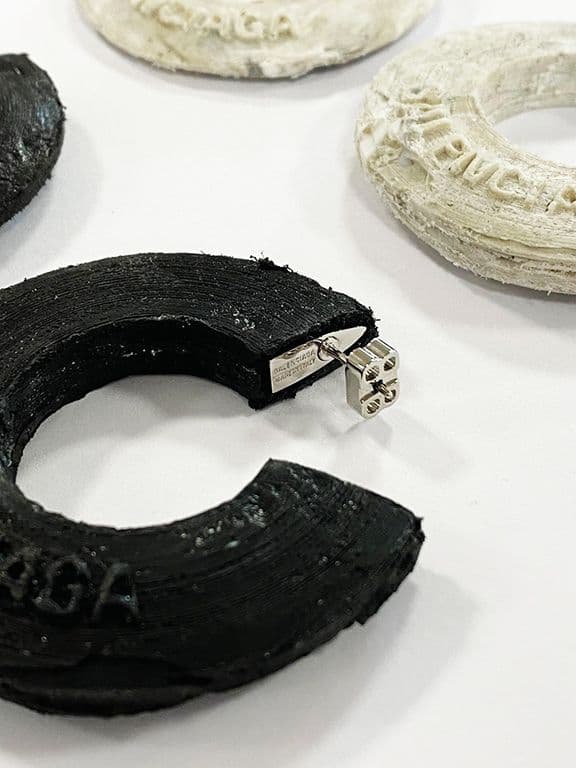Your work uniquely integrates obscure materials like blood, man-made fossils, and crystallisation processes. What were the inspirations behind these works?
Usually, the way I come up with subjects or inspirations for new self-initiated projects is by chance encountering a fascination.
I love natural sciences and philosophy and read extensively about those subjects in my free time. Once in a while, I come across a sentence, a title, or a small story that fires up my inspiration and I dig into the subject to find out more. This is just my natural way of thinking.
For example, when I came up with working with animal blood which led to my project The Meat Factory, I started from my own inner conflict as a vegetarian for ethical reasons and the physical drive I still had to eat meat. Later on, when I started reading, I found out about how colour is used in meat to make it attractive. I read about the symbolism of blood, the attractiveness and disgust it evokes and how it is used in different industries. This project is somewhat unique in compression to my other works, as I wanted to understand the psychological difficulties of working with raw materials. It came from a very personal and intimate place, yet, still deals with the bigger subjects I work with, such as entanglement, what is good and what is bad, eco-philosophy and so on.

Could you elaborate on your approach to seeking a deeper understanding of materials, particularly in conveying stories about places, cultures, and resource relations?
I see the world as an interconnected network, everything affects and is affected by other elements.
When I approach a new research subject, I try to fan out the research as far as possible, I look at extraction, scientific research, material cultures, geopolitics, history, present and future and much more, those are the levels I would like to convey and frame in the stories of materials.
As not everything is possible to apply esthetics-wise, I use the discursive design method of creating an invite for the audience, how can my objects create a sense of curiosity or emotions in the viewer, and make them want to know or talk more about it, it can be by suggesting context in the presentation of the objects, in their esthetics, accompany my work with texts and if I can, I use my self as a tool for storytelling when presenting and discussing the work.

As an autonomous designer involved in collaborations with various companies and institutes, how do you ensure that your vision and the conceptual integrity of your work are maintained?
I love collaborating, but, I wouldn’t enter into a partnership with a client or collaborator if they don’t appreciate my way of working or are at least open to it. When being approached by clients, the first thing I look for is that we share a passion for design and storytelling. It is very important that we are both enthusiastic, critical and willing to explore together. I am protective of the integrity of projects I already made and if a partner would like to work on them, I make sure we can bring those ideas further without losing the core.
For example, when I was approached by Balenciaga to use my Lithoplast material - a speculative material I developed as part of my Metamorphism project, for a new jewellery collection, we were very coherent on the story we wanted to convey with the material, the transformation of materials through time, and they encouraged my signature esthetic.
For new projects, I am very open to working hand in hand with a client, and I believe ideas and process exchange are crucial.

In light of the increasing global focus on sustainability and circular economy, how do you see the role of conceptual material design evolving?
When it comes to the words "circular" and "sustainability", I believe we should look at it more critically.
I named my practice conceptual material design because I saw the lack of critical thinking in material design. So many so-called "new" materials are being produced and made with very linear thinking of using waste to create something else or new. The words "green", "sustainable", and "renewable" are being abused by big companies as well as autonomous designers so easily nowadays. I see my role within the field of design as an investigator with a critical view.
I am not necessarily looking to solve problems, replace materials, or create new ones, I want to shape the way people think about what is materiality, how it is all interconnected and what anthropocentric views we frame the world around us with. When I hear the word "sustainability", I always remark that it is about sustaining us as a species, not necessarily taking it into account nature's needs.








